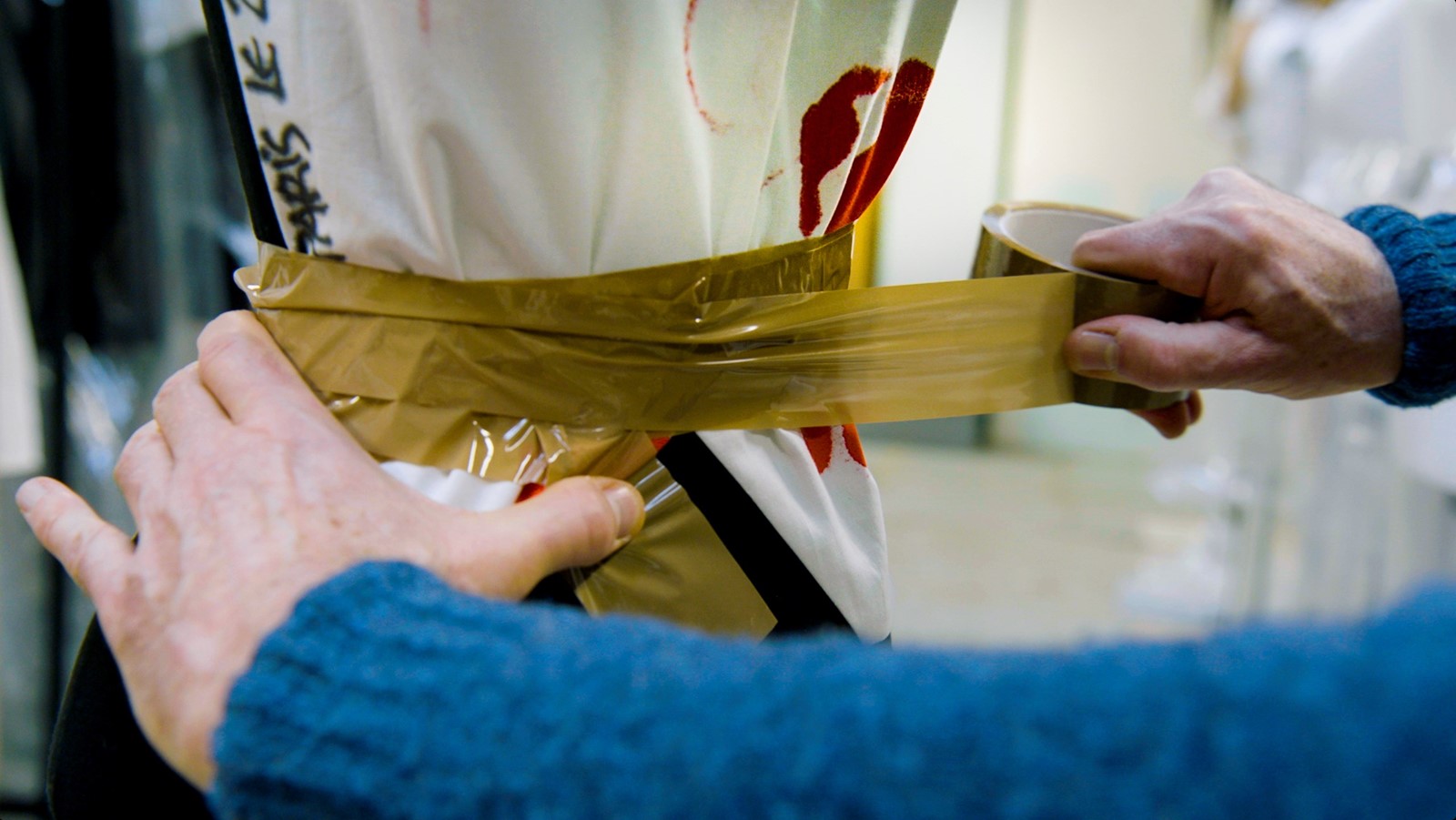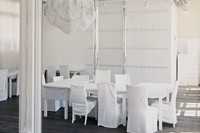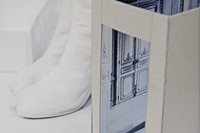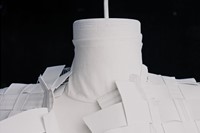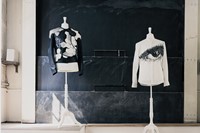In the new documentary Martin Margiela: In His Own Words, a characteristically smoky-eyed Carine Roitfeld sums up the reclusive designer’s career pretty succinctly. “All of Martin’s clothing,” she says, “put everything else out of fashion.” That’s kind of it, isn’t it?
The worshipful documentary, helmed by Dries director Reiner Holzemer, covers the entirety of Margiela’s career, beginning with his childhood in 1960s Genk, Belgium, and finishing with his final bow and exit from the fashion industry in 2008. The designer has never shown his face (“anonymity for me was a kind of protection of my person,” he tells Holzemer), and while the documentary doesn’t expose what he looks like, it’s still deeply personal. Margiela’s warm, soft voice narrates several scenes; Holzemer shoots his hands touching childhood objects, writing notes, removing his glasses and setting them elegantly upon a table.
“Not showing [Margiela’s] face was not a problem for me,” the director says over tea at a Manhattan hotel. “I think that in the end, I imagine that people can have the feeling that they’ve met him, or maybe even seen him. You become very intimate with his world.”
In His Own Words of course looks back at marquee moments in Margiela’s genius career, like shows staged in a Paris Salvation Army (Cathy Horyn recounted watching the presentation while sitting on a washing machine), an abandoned freight train, and 1989’s groundbreaking presentation at a playground in the 20th arrondisement, long before such unorthodox venues were commonplace. There is archival footage of major collections, like Autumn/Winter 1994’s take on full-size doll garments, Spring/Summer 1997’s ‘Stockman’, and Holzemer’s personal favorite, Spring/Summer 1996’s photo-print trompe l’oeil offerings. There are accounts of Margiela’s first atelier, where even the phones were painted white, a reminiscence on how the designer and his fellow students at Antwerp’s Royal Academy of Fine Arts snuck into Jean Paul Gaultier’s shows using fake invitations made from yoghurt-pot lids, and adoring remembrances of models who praised the “intelligent” look of the Margiela woman.
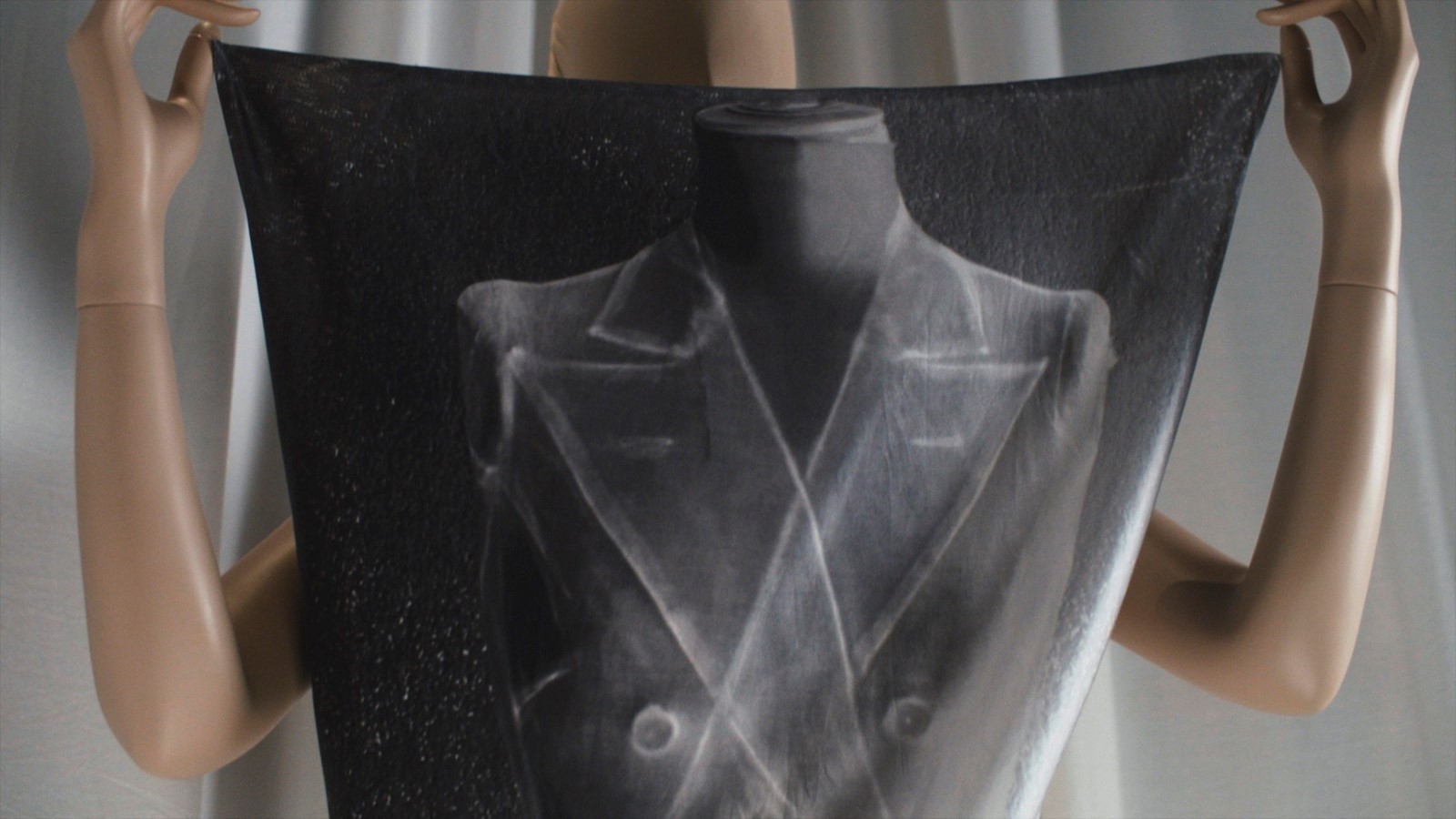
But the film’s most poignant moments come from the designer’s recounting of his childhood. He draws clear connections between his upbringing and later career; he adored his grandmother, a dressmaker, and developed an early love of wigs once his father started selling them in his hair salon (“I thought it was very extravagant”). He knew he wanted to be a fashion designer after he saw a documentary about André Courrèges at the age of six, and, inspired, promptly cut the toes off the shoes of all his dolls. In His Own Words shows the first garment Margiela ever made: a replica of a grey Yves Saint Laurent blazer for his Barbie. “I think she looks already like a Margiela model,” he says, gingerly touching the tiny jacket.
Margiela initially told Holzemer about his burst of Courrèges-fuelled inspiration while the two were lunching in Paris. “I said Martin, this is so incredible, so if that’s the truth we must tell it in the documentary,” Holzemer recounts. “He said no, it’s too private. He’s a person who sometimes needs to digest ideas and thoughts.”
“And four weeks later we met again, shooting something, and he said, ‘are you still interested in that childhood story?’” he continues. “And I said ‘yes, of course’. And he said he had talked to his mother, and found out that she kept all his sketches, drawings, all his Barbie dolls and the garments from childhood. And I think he was touched by that fact.”
Margiela was convinced to make the documentary with Holzemer after some mutual collaborators, like fashion historian and 2018 Margiela retrospective curator Olivier Saillard, sent a few emails vouching for the director. The film was completed just 18 months after they first met. But Margiela could be something of a difficult subject (which Holzemer sort of likes – he was initially drawn to the idea of working with fashion designers after reading a feature in a German newspaper about John Galliano’s notorious 2011 breakdown). Holzemer purposefully did not push too hard on anything “negative,” maintaining “a certain sensitivity”.

“We started shooting four days after we met for the first time,” says Holzemer. “He felt the respect from our side, in his work and his person, and he felt I respected his anonymity.”
“Some things are still painful for [Margiela], and he’s a person who reacts physically to negative experiences,” he says. “I think in a way he loves to have things in harmony. If it’s too negative for him, he gets a physical reaction. It took him a whole year to get rid of his physical problems after he quit the job, and I said that of course I wanted to talk about those experiences. But I think he avoided trying to encounter those experiences, because they were very painful for him.” La mode, apparently, destroys.
The film addresses the challenges Margiela faced after he sold his label to Renzo Russo’s OTB group; Horyn says it wasn’t a good match. Like so many brilliant designers, he struggled with the intense demands of the market, which called for more and more collections each season, and with the new pressures of the internet. He left his own house abruptly in the 2008 show, and in the documentary he expresses deep regret that he couldn’t say goodbye to his team. And so he writes them a note, the camera following his hand as he prints neatly on a sheet of white paper: “Thanks to everyone who helped make my dream come true!”
Maison Margiela: In His Own Words premiered at Doc Fest New York last week; worldwide release dates are to be announced.
